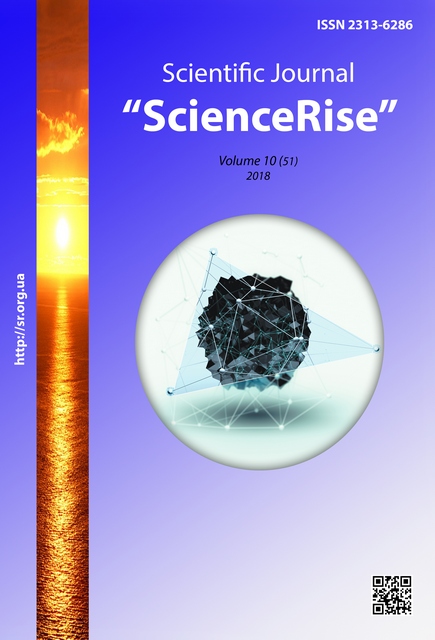Method of the reliability calculation of orthotropic composite materials with random defects
DOI:
https://doi.org/10.15587/2313-8416.2018.146636Słowa kluczowe:
reliability, orthotropic composite material, probability of failure, distribution function, failure loadingAbstrakt
An algorithm for the reliability calculating of stochastically defective orthotropic composite materials under conditions of a complex stress state is described. The criterion of maximum macroscopic stresses for a composite with arbitrarily oriented cracks with a predominant orientation in the direction of reinforcement is considered. The distribution function of the composite failure loading is obtained. The calculation is carried out and diagrams are constructed for the dependence of the test material sample probability of fracture on the applied loading for different number of cracks and structural heterogeneityBibliografia
Barbero, E., Fernández-Sáez, J., Navarro, C. (2000). Statistical analysis of the mechanical properties of composite materials. Composites Part B: Engineering, 31 (5), 375–381. doi: https://doi.org/10.1016/s1359-8368(00)00027-5
Dirikolu, M., Aktas, A., Birgoren, B. (2002). Statistical analysis of fracture strength of composite materials using Weibull distribution. Turkish Journal of Engineering and Environmental Sciences, 26 (1), 45–48.
Sakin, R., Ay, İ. (2008). Statistical analysis of bending fatigue life data using Weibull distribution in glass-fiber reinforced polyester composites. Materials & Design, 29 (6), 1170–1181. doi: https://doi.org/10.1016/j.matdes.2007.05.005
Kolios, A. J., Proia, S. (2012). Evaluation of the Reliability Performance of Failure Criteria for Composite Structures. World Journal of Mechanics, 02 (03), 162–170. doi: https://doi.org/10.4236/wjm.2012.23019
Khoroshun, L. P., Nazarenko, L. V. (2013). Deformation and Damage of Composites with Anisotropic Components (Review). International Applied Mechanics, 49 (4), 388–455. doi: https://doi.org/10.1007/s10778-013-0578-6
Balasubramanian, M. (2016). Statistical analysis of tensile strength and elongation of pulse TIG welded titanium alloy joints using Weibull distribution. Cogent Engineering, 3 (1). doi: https://doi.org/10.1080/23311916.2016.1239298
Naresh, K., Shankar, K., Velmurugan, R. (2018). Reliability analysis of tensile strengths using Weibull distribution in glass/epoxy and carbon/epoxy composites. Composites Part B: Engineering, 133, 129–144. doi: https://doi.org/10.1016/j.compositesb.2017.09.002
Kvit, R., Krupka, Z. (1997). Determination of the orthotropic composite materials strength statistical characteristics. Bulletin of the Lviv Polytechnic State University. Physical and Mathematical Sciences, 85–87.
Serensen, S., Zaitsev, G. (1982). Bearing capacity of thin-walled structures made of reinforced plastics with defects. Kyiv, 295.
Deliavskyi, M., Kvit, R. (1992). Macro-stress distribution near crack-like defects in anisotropic micro-inhomogeneous body under flat deformation and longitudinal displacement. Physicochemical Mechanics of Materials, 2, 50–54.
Korolyuk, V., Skorokhod, A., Portenko, N., Turbin, A. (1985). A manual on probability theory and mathematical statistics. Moscow, 640.
Kvit, R. (2000). A statistical approach to the assessment of the reliability of structural materials. Bulletin of the Lviv Polytechnic National University. Physical and Mathematical Sciences, 93–96.
Vytvytsky, P., Popina, S. (1980). Strength and criteria of brittle fracture of stochastically defective bodies. Kyiv, 186.
Sih, G. C., Liebowitz, H. (1975). Mathematical theory of brittle fracture. Fracture. Vol. 2. Moscow, 83–203.
##submission.downloads##
Opublikowane
Numer
Dział
Licencja
Copyright (c) 2018 Roman Baitsar, Roman Kvit

Utwór dostępny jest na licencji Creative Commons Uznanie autorstwa 4.0 Międzynarodowe.
Our journal abides by the Creative Commons CC BY copyright rights and permissions for open access journals.
Authors, who are published in this journal, agree to the following conditions:
1. The authors reserve the right to authorship of the work and pass the first publication right of this work to the journal under the terms of a Creative Commons CC BY, which allows others to freely distribute the published research with the obligatory reference to the authors of the original work and the first publication of the work in this journal.
2. The authors have the right to conclude separate supplement agreements that relate to non-exclusive work distribution in the form in which it has been published by the journal (for example, to upload the work to the online storage of the journal or publish it as part of a monograph), provided that the reference to the first publication of the work in this journal is included.

